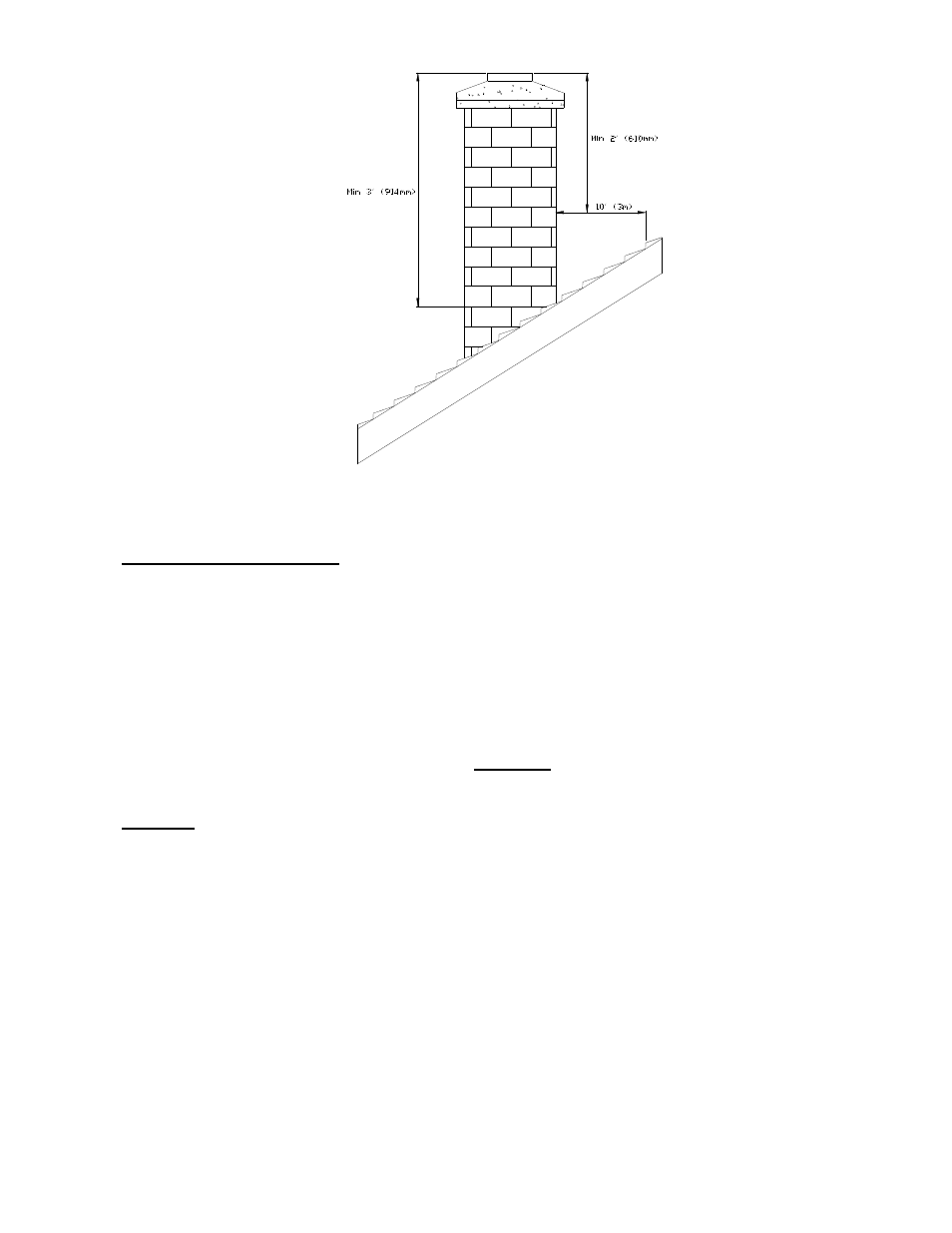Osburn OB01111 User Manual
Page 20

20
Figure 1.6 – Chimney height
EXTERIOR CHIMNEY
Chimneys constructed outside of the home on an exterior wall should be avoided if possible,
especially in colder climates. Exterior chimneys may not draft well and in fact may down draft
(reverse flow) due to the difficulty in heating them up to operating temperature while trying to
evacuate the stack gases. All else being equal, cooler chimneys will have less draft than
hotter ones; this may lead to creosoting and poor performance. If an exterior chimney is used
to remove the stack gases the best results will be obtained by using a connector vertically off
the unit to the highest possible point before elbowing off horizontally to the chimney. For
efficiency and safety reasons the stove
must not
be installed with an insulated chimney
connected directly to the appliance.
DRAFT
Your E.P.A certified Osburn stove’s performance will be optimised if it is installed with a
chimney (flue) system that provides an adequate draft. The draft is the force that moves air
from the appliance up through the chimney and is predominantly affected by the height and
diameter of the chimney, as well as the stack temperatures of the stove. If you test the draft
using a pressure gauge, the reading should be between .05 - .07 inches of water column
(w.c.) at a medium-high fire. A draft measure of less than .03" w.c. will cause operational
difficulties while too much draft (greater than .10" w.c.) will result in over-firing of the stove.
This can result in excessive operating temperatures. In this case, the installation of elbows
totaling no more than 180° (ex.: 2 x 30° elbows, 2 x 45° elbows or 2 x 90° elbows) can be
installed to help reduce excessive draft. If the addition of elbows is not sufficient, a manual
damper can be installed in the vertical flue pipe.
